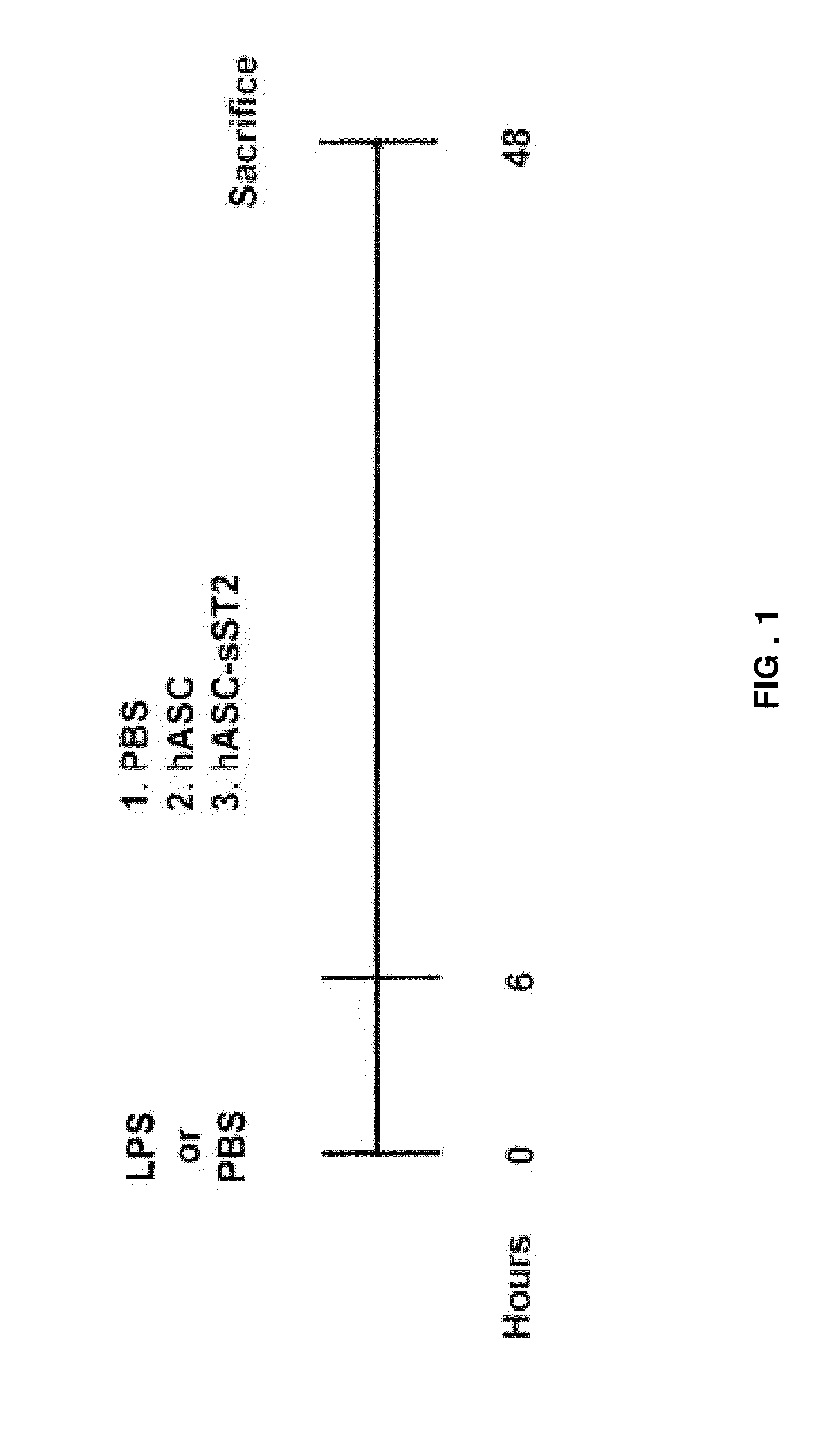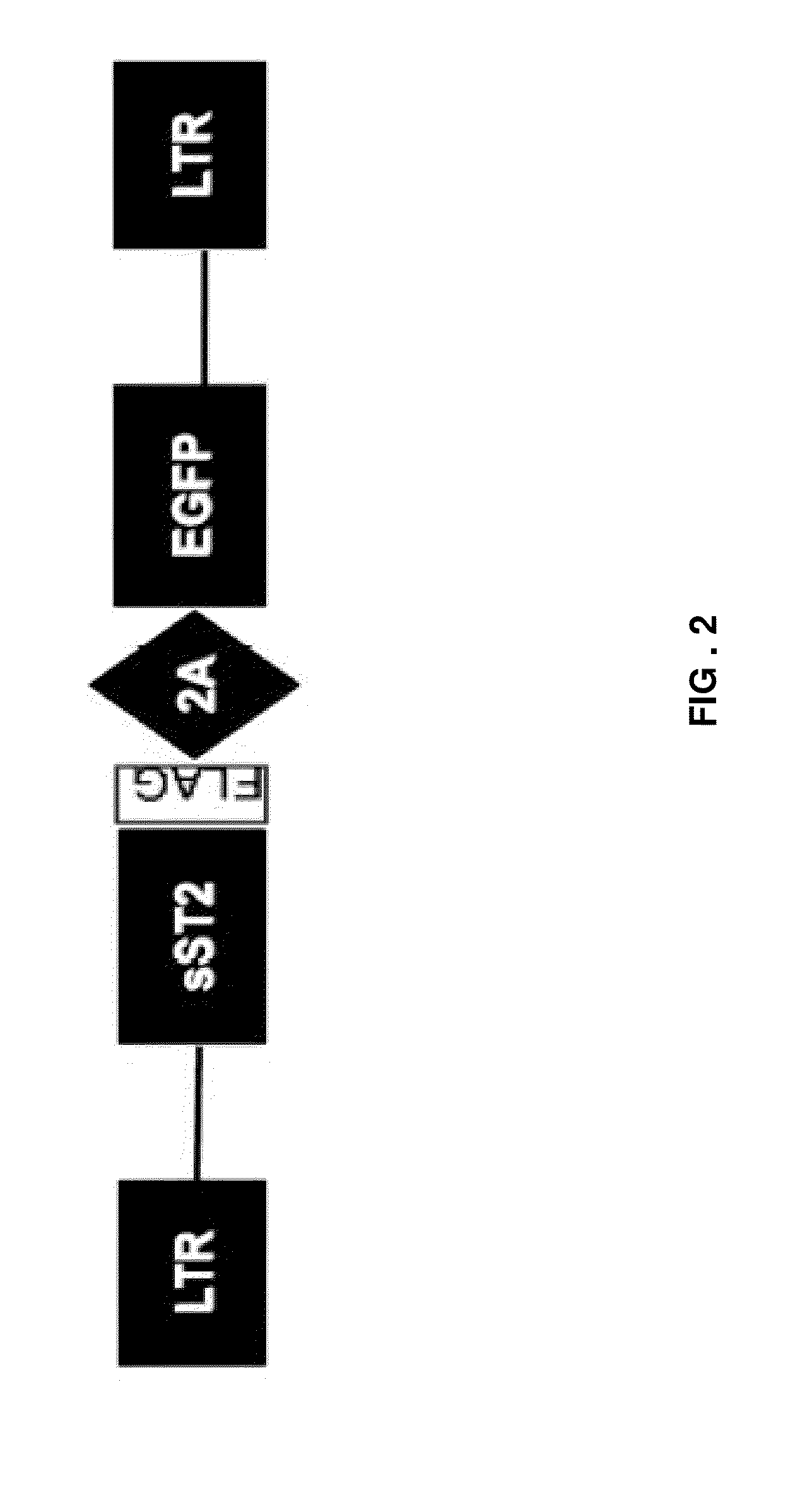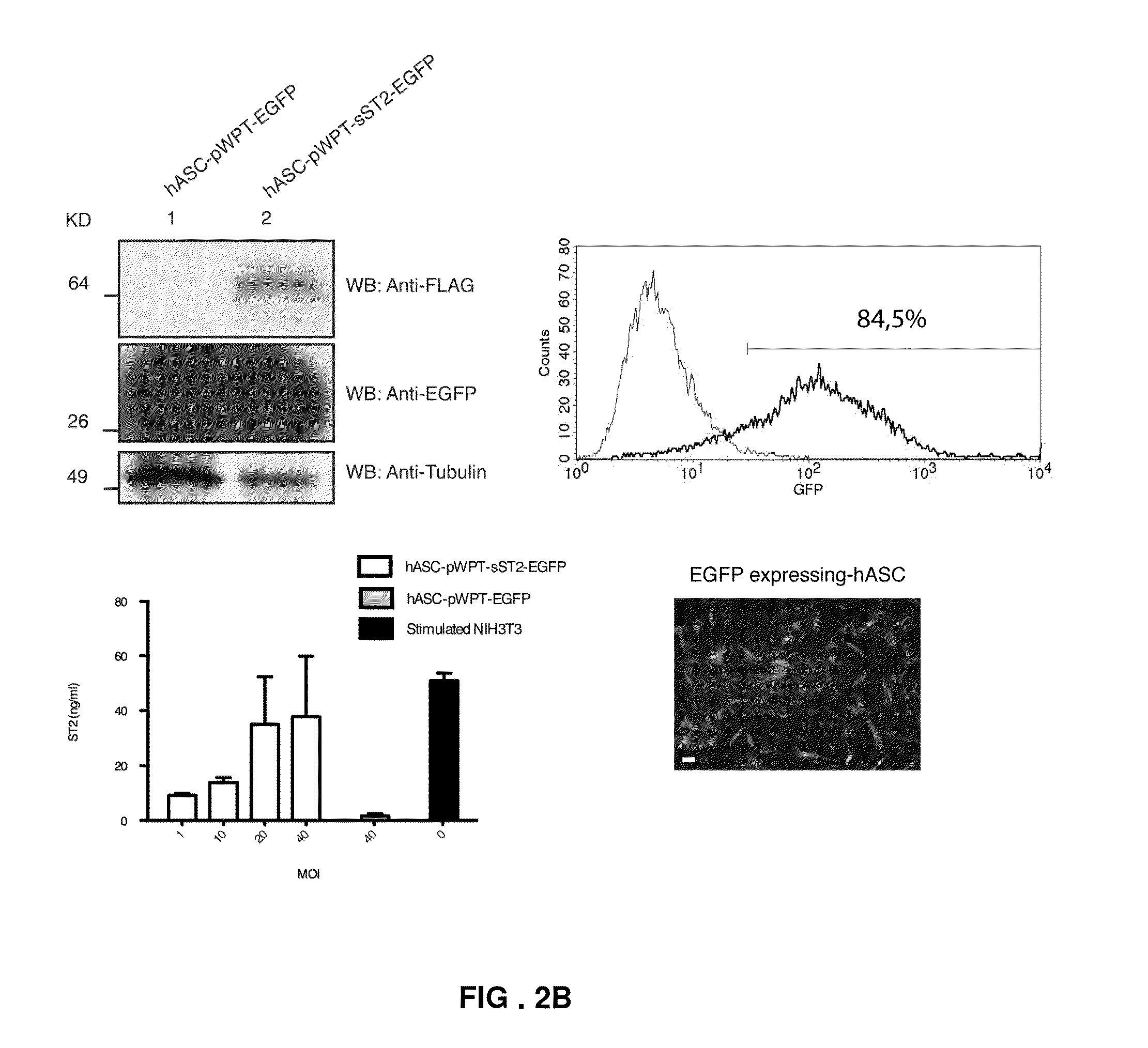Engineered stem cells and their therapeutic use
a technology of stem cells and stem cells, applied in the field of engineered stem cells and their therapeutic use, can solve the problems of copd, unacceptably high morbidity and mortality, copd is a leading cause of disability and death, etc., to reduce the severity of inflammation, enhance repair, and regulate endothelial and epithelial permeability.
- Summary
- Abstract
- Description
- Claims
- Application Information
AI Technical Summary
Benefits of technology
Problems solved by technology
Method used
Image
Examples
Embodiment Construction
[0037]In a first aspect, the present invention relates to mesenchymal stem cells (MSC) genetically modified to express sST2 or parts thereof for use in the treatment of airway immune inflammatory and lung diseases, wherein said mesenchymal stem cells are not human embryonic stem cells. The amino acid sequence of sST2 is well known in the art as the soluble or extracellular domain of T1 / ST2, and is defined as residues 1-328 of SEQ ID NO: 1 (human), and residues 1-337 of SEQ ID NO: 3 (mouse), and are identified by GenBank Accession No. NP—003847.2 and GenBank Accession No. NP—034873.2, respectively. “variants thereof”, when refer herein to sST2, means any variant (fragment, analog or derivative) of mammalian sST2 which maintains the functional activity of wild-type sST2. Such variants include, for example, a polypeptide encoded by a naturally occurring allelic variant of native sST2 gene (i.e., a naturally occurring nucleic acid that encodes a naturally occurring mammalian sST2 polype...
PUM
| Property | Measurement | Unit |
|---|---|---|
| pH | aaaaa | aaaaa |
| density | aaaaa | aaaaa |
| flow rate | aaaaa | aaaaa |
Abstract
Description
Claims
Application Information
 Login to View More
Login to View More - R&D
- Intellectual Property
- Life Sciences
- Materials
- Tech Scout
- Unparalleled Data Quality
- Higher Quality Content
- 60% Fewer Hallucinations
Browse by: Latest US Patents, China's latest patents, Technical Efficacy Thesaurus, Application Domain, Technology Topic, Popular Technical Reports.
© 2025 PatSnap. All rights reserved.Legal|Privacy policy|Modern Slavery Act Transparency Statement|Sitemap|About US| Contact US: help@patsnap.com



